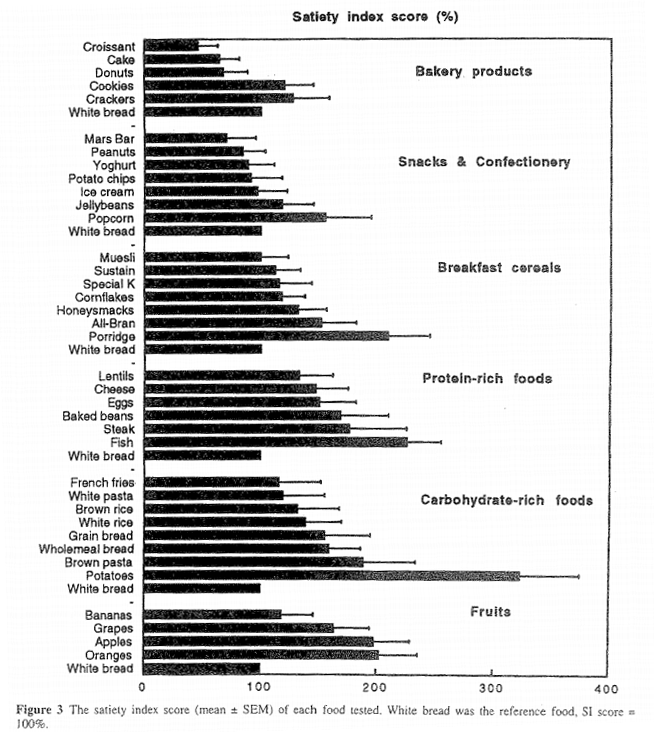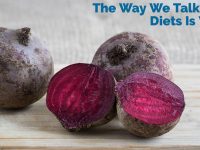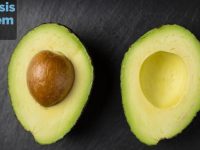If there’s one thing every nutritionist can agree on, it’s that vegetables are great. They’re high in nutrients, low in calories, and in general should be found on all plates, 100% of the time. One thing that often gets glossed over, though, is that not all vegetables are equally great. Truthfully, some are only kind of “meh”, yet find themselves on our plates and in our bowls with surprising frequency.
No more. In this article today, I’m going to put these lackluster veggies back in their proper places—because if you’re bothering to eat vegetables, you should be getting at least 120% value out of them. Let’s look at the worst offenders: the vegetables that are the most overrated.
(Oh, and in case my tone isn’t coming across, please bear in mind that this article is written tongue-in-cheek. No grumpy comments!)
Mushrooms
Mushrooms are often touted as some kind of superfood, but I looked into their credentials and found them lacking. In fact, they’re not even technically a vegetable—they’re a fungus, which isn’t even a recognized nutritional category like “fruits”, “fats”, or “starches”.
Mushrooms don’t have a lot going for them nutrient-wise. They provide only modest amounts of a handful of nutrients, specifically vitamins B2, B3, B5, B7 (biotin) and the minerals copper, potassium, and selenium. That all sounds well-and-good, but those nutrients are some of the most abundant, easiest-to-get nutrients in our diet—and again, most commonly eaten mushrooms are only modest sources of them. For example, an entire cup of shiitake mushrooms provides you with about 36 micrograms of selenium, which is roughly equivalent to the amount of selenium found in one third of a single Brazil nut. (And yea, okay, Brazil nuts are ridiculously high in selenium, but that’s because they’re a real superfood and not a faker.)
Mushrooms aren’t even high in fiber, mostly because they’re (again) not actually vegetables and don’t have the same type of cell wall as plants (mushroom cell walls are reinforced with chitin, the same material that crab shells are made of). As a result, a cup of cooked mushrooms has only about 3 grams of dietary fiber total—compare that to the 4 grams of fiber in cooked Brussels sprouts or cabbage. Okay, I guess they’re alright fiber-wise.
Finally, while mushrooms are often touted for their anti-cancer phytonutrients (not really phytonutrients since they’re not plants, but rather myconutrients), the dirty secret that gets swept under the rug is that mushrooms also contain significant amounts of a cancer-causing mycotoxins called hydrazines. Hydrazines are extremely hard to cook away, and so they tend to persist in the mushrooms that do make their way into our digestive tracts. Do these pro- and anti-cancer compounds balance out? Who knows! (I mean, probably—most foods we eat contain both pro- and anti-cancer compounds when those compounds are studied in isolation.)
Mushrooms are great for adding earthiness to a dish, but should maybe be passed over otherwise. Next!
Broccoli
Broccoli feels like an early prototype culinary scientists invented on their way to tastier, more interesting vegetables. The only remotely good part on it is the florets, but for every gram of florets you get about 20 grams of tasteless stalk. This is similar to asparagus—which also has a tasty tip—except that an asparagus stalk also tastes nice, has a pleasant texture, and reminds you that you’ve eaten it for the next eight hours when you go to the bathroom.
The family broccoli belongs to—the cabbage (or mustard) family, or cruciferous vegetables—is large and diverse. There are so many better-tasting, more interesting options. If you’re looking for something with similar applications, you can use broccolini or Chinese broccoli (gai lan); the former is sweeter and more tender, the latter more pleasantly bitter and complex. Both can stand on their own without the need to get fancy to make them edible (but if you do want to get fancy, then both do better there as well).
There’s a reason diets composed of chicken breasts and broccoli are shamed, and it’s not because chicken breasts are sinking the ship (though they are sort of the broccoli of the meat world in terms of taste). Chicken breasts and broccoli are low-calorie, but so is cardboard; low-calorie shouldn’t mean “devoid of taste”.
Nutrition-wise, broccoli is fine; it’s your stereotypical green vegetable, rich in nutrients like folate, vitamin C, and calcium. You could replace it with basically any other vegetable and get the same benefits. For the sake of your taste buds, I recommend you do.
Kale
Another cruciferous vegetable (to be fair, about 75% of commonly consumed vegetables are in this family), kale is incredible, but also inedible. If we had never discovered fire—unlocking the path to predigesting foods that are tough to extract nutrients from (like meat)—I can assure you kale would never have made it on the plate (of course, a world in which we never discovered fire is also probably a world in which we didn’t selectively cultivate plants in such a way that kale eventually came into existence).
Kale is actually pretty tasty, the problem is you have to cook it far longer than any vegetable has the right to be cooked. Unless you harvest it as a wee baby for your salad, we’re talking 20+ minutes of braising, baking, or otherwise rendering its titan’s share of cellulose fiber into a softened, chewable form. You also generally add copious amounts of fat, making a fully prepared cooked kale dish more comparable calorie-wise to a plate of french fries than some baked cauliflower or stir-fried bok choy (also cruciferous vegetables—they’re everywhere).
Kale’s claim to fame is its high vitamin A content (in the form of provitamin A beta-carotene). Kale is one of the darkest green vegetables there is thanks to abundant chloroplasts, and with those chloroplasts come abundant chromoplasts that create antioxidants such as beta-carotene. A single cup of cooked kale contains nearly enough beta-carotene to meet 100% of an adult male’s vitamin A needs (and more than enough for an adult female). But then, the same is true of sweet potatoes, squashes, spinach, mustard greens, and collard greens. And numerous other veggies. Vitamin A is everywhere in the diet of the developed world.
In the end, kale is mostly just a leafy green, and doesn’t offer much more than any other leafy green except a leathery mouthfeel when inadequately cooked. Maybe that’s what you’re looking for—a sort of vegetable jerky—but if it’s not, other leafy greens work much the same and are far more palatable with less effort.
Sweet Potatoes
Okay, sweet potatoes are delicious, diverse, and nutritious to boot. I don’t have any real qualms about them. The reason they’re overrated is mostly because people seem to universally underrate plain old white potatoes once they set their sights on this tasty orange tuber.
Nutritionally speaking, sweet potatoes and potatoes are virtually identical. Yes, sweet potatoes have much more vitamin A, but that’s about where the differences end. Potatoes also have an advantage, though: they’re amazingly satiating. In fact, they’re the most satiating food on the planet according to some estimates. Just take a look at this graph and see for yourself:

That long line, the one that stretches about twice as far as most other foods—that’s the common white potato. But this is also an experiment you can try at home: just buy some white potatoes and sweet potatoes, weigh them out into equal measures, and time yourself to see how long it takes to eat them and how much you can actually eat in a sitting. When I tried a couple months back, it took at least 15 minutes to make it through a single russet potato (with butter and salt); by contrast, I can eat a cold sweet potato, unsalted, with no butter in less than three minutes. Penn Jillette (of magician duo Penn and Teller fame) famously lost over 100 pounds eating potatoes. I mean, I guess he really ate just potatoes and very little else, which I wouldn’t recommend, but there it is nonetheless.
Keep eating sweet potatoes, but don’t overlook their companion tuber in your zest for perfect nutrition. White potatoes deserve your love too.
(Oh, and before anyone gets on my case and tells me that sweet potatoes aren’t vegetables, I know they aren’t. Or really, they are, but we classify them as roots culinarily. They do come from a plant, though, and that makes them technically a vegetable, something that mushrooms cannot claim no matter how hard they try. This applies to the next overrated food, as well.)
Green (Bell) Peppers
Green peppers are one of those curiosities of the food world—an edible part of a plant that we’ve decided to harvest early, before taste and nutrition can really develop. Green peppers have a satisfying crunch, but if you compare them to any of their fully ripened brethren they are but a pale shadow.
Why do we do this to ourselves? Unlike virtually every other type of food in the world—foods that run away, fight back, repel us with bitter compounds, or outright try to poison us—fruits actually want to be eaten. But only when they’re ripe. That’s why they turn bright colors when they’re ready to be eaten, so we may notice them easier. Green peppers don’t stand out on the pepper plant; red peppers do.
Green peppers haven’t been allowed the time to develop their mature, sophisticated taste and nutrition. Sure, they have slightly less sugar (3.5 grams vs 6 grams per cup), but they also have significantly less of literally every other nutrient normally found in a pepper.
The worst offenders are the bell peppers, but the same can be said of spicy green peppers, too—they’re just better when they’re allowed to ripen! At least spicy green peppers like jalapeños and green chilis offer capsaicinoids to add some intrigue to a dish (and they also roast up and char really well), but their ripened versions are even more delicious, which is why sauces like Sriracha use ripe, red jalapeños in their formulations and not green ones. And, of course, the best spicy pepper are still vibrantly colored, like habaneros and bird’s eye peppers.
From nature’s perspective, green peppers are literally unready to be eaten. Are you better than nature?
The Top Overrated Vegetable…
I could probably go on awhile longer, but I think you get the point—some vegetables are poor sources of nutrition, unready to be eaten, or just plain not good tasting. They’re overrated, and maybe you should think twice about putting them on your plate.
Or maybe not.
Here’s the thing about vegetables and nutrition: they’re all pretty damn good. The most overrated vegetable is the vegetable you think you should eat but never do. Conversely, the most underrated vegetable is the one you could eat all day and not mind. The differences in nutrient content vegetable-to-vegetable just aren’t enough to worry about, and if you’re choosing vegetables because they’re have more of nutrient X or Y then you’re worrying about the wrong things.
Do carrots or kale have more nutrients? Probably kale, but maybe you don’t want to spend the time cooking the kale up while carrots can be eaten without more preparation than pulling one from the fridge. In this circumstance, carrots are certainly the better choice, and your body doesn’t really care one way or another.
Eat the vegetables you want to eat. Certainly you should try to branch out and try new ones, but that’s more because you might find something else you love than because it’ll improve your health; plus, it’ll make your diet more interesting in general.
What about you? What are your most overrated vegetables?














